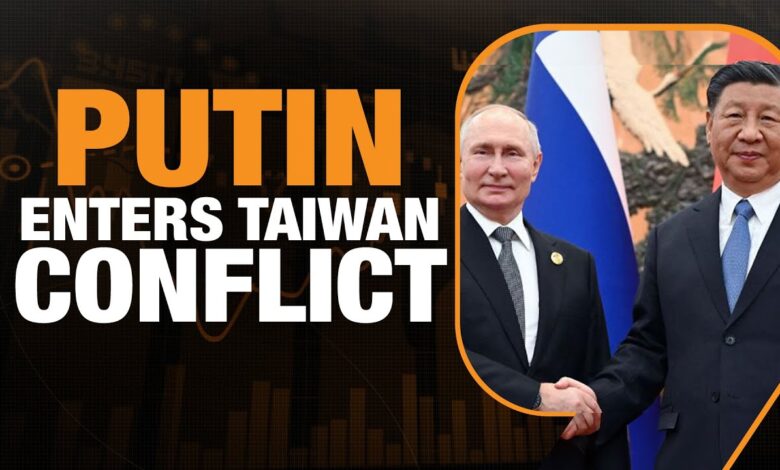
Introduction
Russian nuclear relations continue growing its influence with this aggressive stance of China over Taiwan. The global community takes this very seriously because the situation accelerates quickly. While the United States and its allies are still coming to terms with this new axis of military power, especially the flexing of Russian nuclear prowess in the region, the nearer term impact for East Asia, given China’s military encirclement of Taiwan, has added to growing anxieties that a spark could soon set off something much bigger.
Russian Nuclear Power in the Asia-Pacific
Always part of a grand strategy for Russia to maintain its place as a significant global player, Moscow’s interest in projecting nuclear power in the Asia-Pacific has never wavered. Past records already signify considerable military strength stationed in the eastern regions, where solid footholds can be established through nuclear-powered submarines and missile systems in places like the Kamchatka Peninsula and the Kuril Islands. Such control over strategic maritime routes will then keep it in an important place within the region.
Russia has been increasing its nuclear deterrence in the Asia-Pacific over the past years. It has engaged in numerous military exercises and shows of power to tell the world it is ready to defend its interests. The Russian military drills, which have involved strategic bombers and missile-equipped submarines, have made a stern statement to the world for the past few months. Significantly, the United States is occupied countering the increasingly more robust strategic moves from Beijing. Simultaneously, this insidious shift from Russia appears to be also aimed at taking advantage of vulnerabilities within the concentration level of the U.S. in advancing Moscow’s influence within the Pacific Rim region.
Russia-China Alignment: Force Multiplier
This ever-deepening partnership is playing a game-changer in the balance of power in the Asia-Pacific region, between Russia and China. Not an alliance in the strict meaning of the word, since they still do not have a formal mutual military agreement, the combined front against the long-standing U.S. dominance continues to challenge it. The closer that these two powers move toward each other, the more they coordinate their military activities-including joint naval drills and aerospace exercises-to signify their combined strength to the West.
Next, Russia’s nuclear ratcheting up is dovetailed with China’s ever bolder moves around Taiwan. All this complicates the strategic calculus for the United States. By tapping its nuclear clout, Russia does provide China with a protective umbrella that could embolden Beijing to go after its interests in Taiwan without America intervening. Both share the same goal: undermine US influence in the region and create a multipolar world order where Western hegemony is diminished.
China’s Military Encirclement of Taiwan
Meanwhile, across Taiwan, the Chinese activities have been upscaling to unprecedented military exercises. For a year now, Chinese fighter jets, warships, and missile systems have been almost routinely entering Taiwan’s ADIZ (air defense identification zone) and territorial waters. The PLA has repeatedly demonstrated their ability to encircle the island nation from all sides and leave no escape.
China’s policies are calculated to crush Taiwan into submission: China can overwhelm its defenses and isolate it from potential foreign support by putting it on the inside of the blockade. This surrounded position sends a message not just to Taiwan but also more so to the United States and its allies-the PLA will use military force to solve what China considers as an internal matter. The exercises are instrumental in being a show of force as much as it would be an exercise in preparation for invasion.
The US Response: Shock and Strategic Reevaluation
Traditionally, strategic footholds in the region have depended on Pacific allies and military bases in Japan, Guam, and South Korea. The United States is stunned by the scale of coordination between Russia and China. Having been focused on countering China’s rise, Washington is now forced to reassess its strategy in the Asia-Pacific because of new nuclear dynamics brought about by Russia.
The U.S. is caught between a hard and harder place. On the one hand, it is committed to defending Taiwan and freedom of navigation in the South China Sea and the Taiwan Strait. On the other hand, that risk means taking on not only China but a nuclear-armed Russia; and that introduces a degree of complexity Washington may not have foreseen. A miscalculation in this volatile environment could ratchet up into a wider conflict involving several nuclear powers.
Global Security Implications
Indeed, the conjunction of Russian nuclear posturing and Chinese military aggressiveness has caused ripples of far-reaching strategic implications for global security. For the first time in many decades, the Asia-Pacific is now witnessing the climax of great-power competition of a sort reminiscent of the Cold War era. There is a difference: whereas in earlier times the stakes were high but barely imaginable with the military technologies and nuclear capabilities available to all parties concerned, this time around, the challenge is at a much higher level.
This situation underlines the vulnerability of international diplomacy and the dangers of one minor misstep being a potential trigger for gunfire. It is not just a regional issue because any confrontation involving Russia, China, and the United States has far-reaching consequences for world peace and stability. Additionally, since nuclear powers are involved, the specter of catastrophic conflict will be looming large, having dire consequences on countries far beyond the region itself.
Conclusion
The world is on the cusp of a major precipice as Russia asserts nuclear influence over the Asia-Pacific and China continues to maintain an aggressive stance over Taiwan. A new and fast-growing alignment between Moscow and Beijing challenges the strategies adopted by the US and its allies in the region. That is to say, with such an increase in nuclear capabilities on both sides, risks of miscalculation escalation or even conflict are at all-time highs, and therefore making diplomacy between these global powers the most important aspect for the parties to avoid what may bring the worst.
Rather, there is now the very real possibility that the Asia-Pacific may become the new site of great power conflict in an era marked by far-reaching implications for global security and stability. As the scenario continues to unfold, it is aptly to be vigilant and prepared to navigate the complexities of this emerging geopolitical landscape that has been created.




